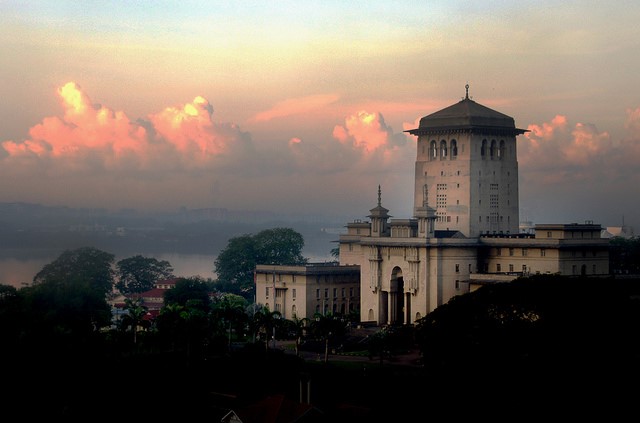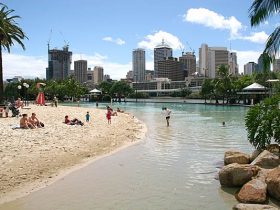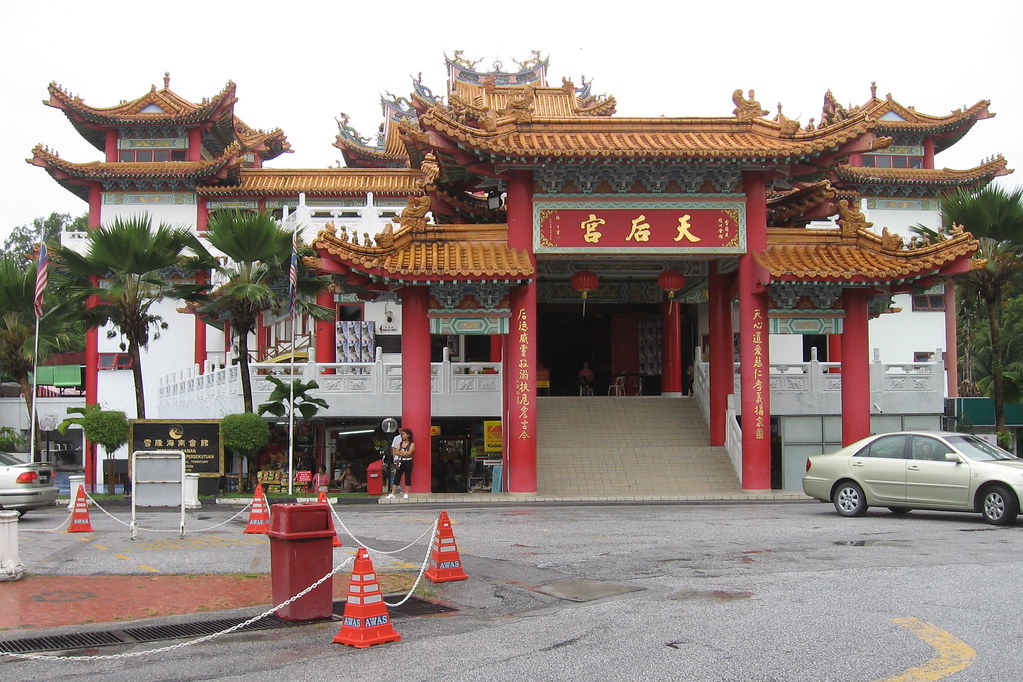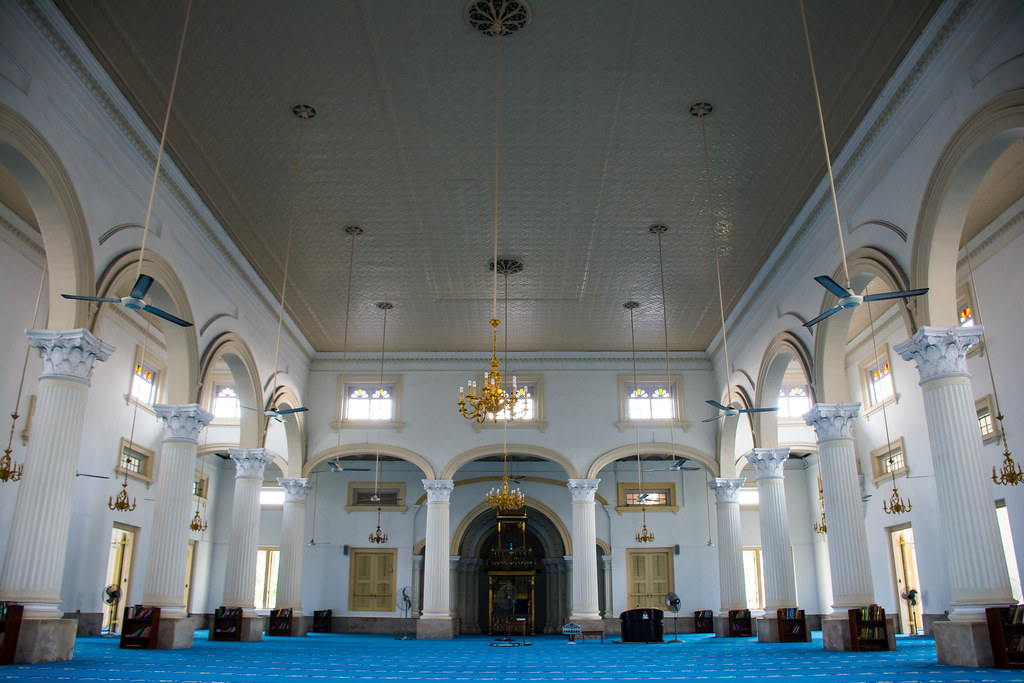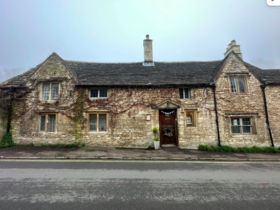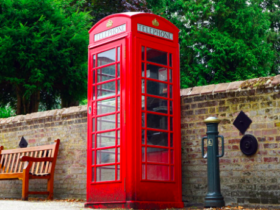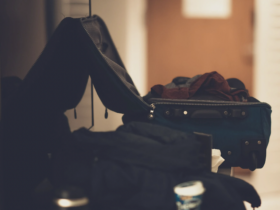Forming the southern end of the Malaysian peninsula, Johor is the most populous state, and Johor Bahru is its state capital. It’s famous for its numerous traditional culinary establishments, as well as shopping and entertainment centers, which attract tourists from all over the globe. Although, in addition to gastronomic pleasures and shopping, in this most southern city of Eurasia you can see many interesting things related to the cultural life of Malaysia. Of course, these places will be interesting both for adults and children. So, 5 most iconic sights of Johor Bahru are at your disposal…
Sultan Abu Bakar Museum
Royal Palace Museum of Sultan Abu Bakar is also known Istana Besar Palace. This luxurious residence of Johor’s sultan is considered to be the main hallmark of the city. Zaharah Botanical Garden is located about 300 meters northwest of the museum complex. The palace was built in 1866 under the guidance of a European architect. The furniture of the palace was made in England by the order of Sultan Abu Bakar.
The museum consists of 4 parts: Devan, Throne Room, Treasure Hall and Hunting Hall. In Devan, a collection of things presented to Sultan Abu Bakar and his successors is displayed: these are swords, medals, glassware, as well as personal memorabilia, photographs of sultans and their families. In the Hunting Hall you’ll find a lot of stuffed animals – tigers, crocodiles, rhinoceroses, and elephants are among them. In the central building on the second floor the royal bedrooms, the royal dining room, the Royal Council Chamber, and the Throne Room are located. On the first floor of the central building there are crystal, gold and silver decorations, royal regalia, Malayan weapons, and an extensive numismatic collection.
Address: Taman Istana, 80000 Johor Bahru
Working Hours: Saturday-Thursday 9am-5pm, Friday closed
Arulmigu Sri Rajakaliamman Glass Temple
It’s the first glass temple in Malaysia and in the world. It was built in 1922, and in 2008 the Hindu temple was completely covered with glass elements. In 2010, it was decided to include it into the Book of Records of Malaysia as the first and the only glass temple in the country. 90% of this construction is decorated with a multicolored glass mosaic. You can see pieces of white, purple, red, green, blue and yellow glass. Generally, there are about half a million of them.
Address: Wadi Hana, 80300 Johor Bahru
Working Hours: Tuesday-Sunday 1pm-5pm, Monday closed
Johor Old Chinese Temple
Built in the 1870s by Chinese migrants, the temple is one of the oldest historical buildings of Johor Bahru. It serves as a symbol of the unity of communities speaking in 5 dialects of the Chinese language: Teochew, Hoklo, Hakka, Cantonese, and Hainan. Unlike many Chinese temples belonging to one clan, it belongs to all the communities simultaneously.
The most interesting time for visiting the temple is the eve of the Chinese New Year and the period from the 20th to the 23rd of the first month after the Chinese New Year. Each year in the first lunar month, the temple organizes the annual Chingay parade. The culmination of the parade takes place on the night of the third day of the month, when five deities march through the center of the city. Just go out and watch the colorful street performances, accompanied by dances of lions and dragons. Chingay parade attracts more than 300,000 people marching along the central streets of Johor.
Address: Johor Bahru, Jalan Trus 8000
Working Hours: Monday-Sunday 7.30am-5pm
Sultan Ibrahim Building
Built between 1936 and 1940, Sultan Ibrahim Building was the tallest building in Malaysia during the period of British colonial rule. It had kept the status of the tallest building until the completion of the Merlin Tower in the 1970s. Until June 2009, it was used as the administrative center of the State Secretariat, the office of the Prime Minister, and the Legislative Assembly Hall of the State. Since June 18, 2009, most of these offices have moved to Kota Iskandar, the new administrative center of the state of Johor. There are no entrance fees. From Sultan Ibrahim Building you can see the Straits of Johor and even the far outlines of Singapore.
Address: Jalan Bukit Timbalan Bandar, Johor Bahru
Working Hours: Monday-Friday 9am-5pm
Sultan Abu Bakar Mosque
The mosque is located on the top of a small hill overlooking the Straits of Johor. It was built for eight years (1892-1900) and is considered to be one of the most beautiful temples of Malaysia. This mosque is very unusual and represents a successful blending of Victorian and Moorish architectural styles. So, its minarets are very similar to English watch towers. Although it’s not allowed for Muslims to get inside, visitors can wander through the surrounding territory and take a few beautiful photos. As a sign of respect for the Islamic tradition, follow the dress code – long pants for men, and headscarf for women.
Address: Masjid Sultan Abu Bakar, 80000 Johor Bahru
Working Hours: Saturday-Thursday 10am-6pm, Friday closed
Johor Bahru is a rich destination in terms of cultural heritage. The amazing temples, mosques and royal palaces provide great opportunity for those who like historical tourism. If you’re among them, it can be an excellent idea to explore the most iconic sights of Johor Bahru. By the way, you can use Johor Bahru car rental service in order to make your trip much more convenient.

